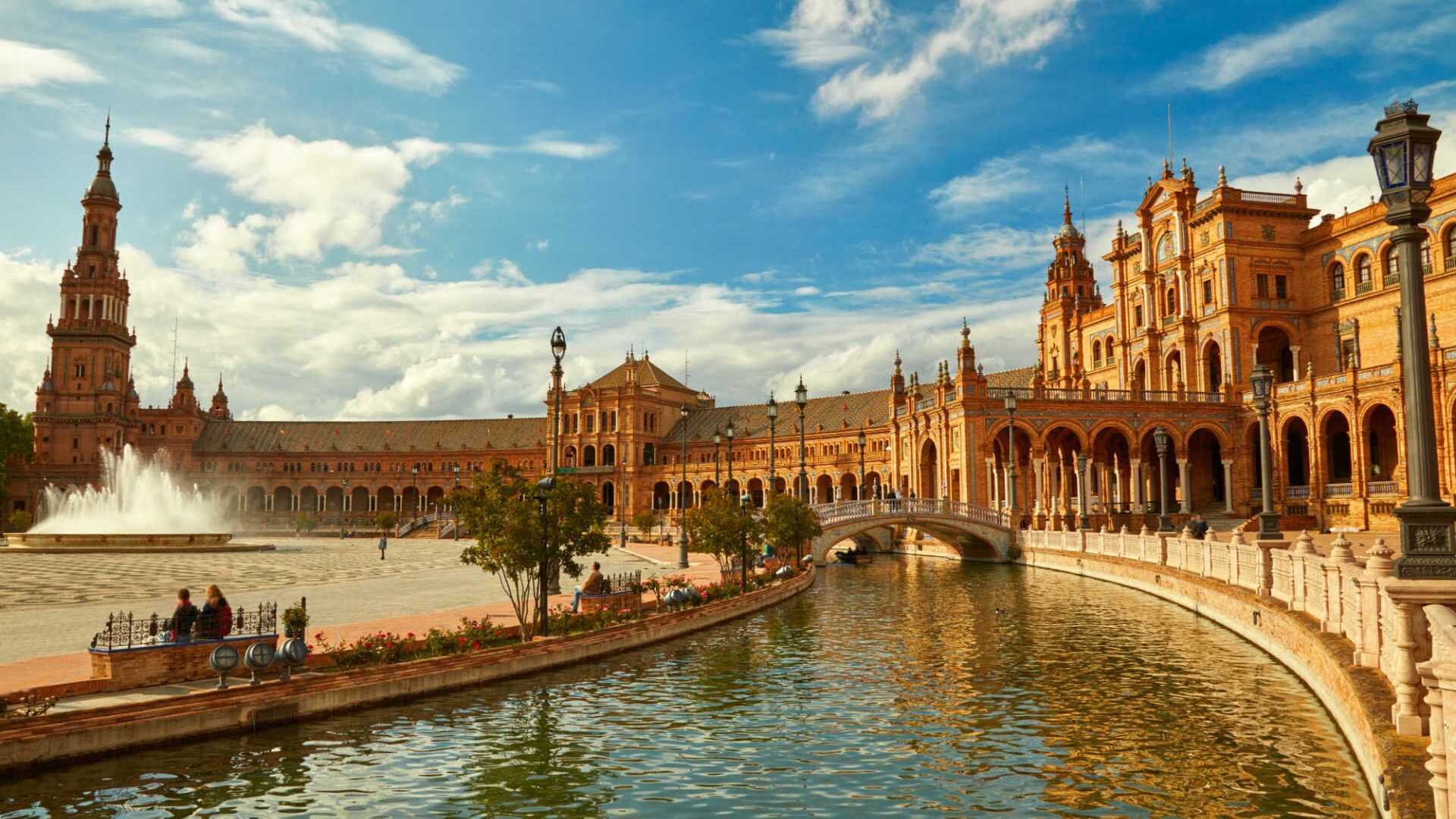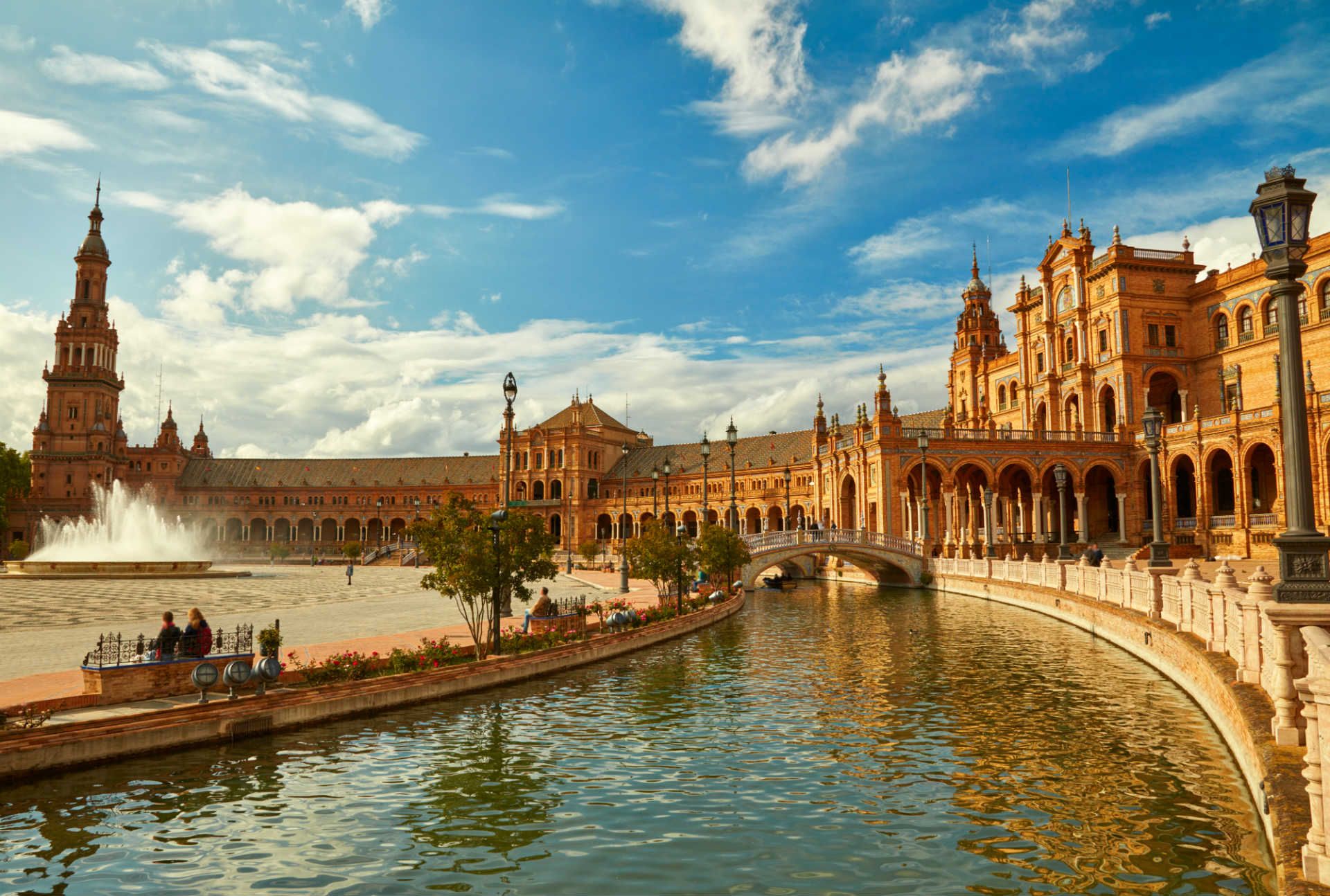
SPAIN
Explore SPAIN
SPAIN
Spain: A Land of Flamenco, Festivals & Flavors
Spain is a diverse and vibrant country known for its rich history, stunning architecture, world-class cuisine, and lively culture. From the artistic streets of Barcelona to the flamenco rhythms of Seville and the sun-soaked beaches of Costa del Sol, Spain offers a perfect mix of history, adventure, and relaxation. Whether you're exploring the Alhambra, indulging in tapas, or dancing until dawn, Spain is a must-visit destination for food lovers, history buffs, and beachgoers alike.
Learn More
Frequently Asked Questions: Spain
Spain has a Mediterranean climate, making it a fantastic year-round destination:
- March–May (Spring): Best for mild weather, blooming landscapes, and fewer crowds.
- June–August (Summer & Peak Season): Ideal for beach vacations, festivals, and vibrant nightlife.
- September–November (Fall): Great for wine harvests, comfortable weather, and fewer tourists.
- December–February (Winter & Off-Season): Best for Christmas markets, skiing in the Pyrenees, and cultural experiences.
- Sagrada Familia (Barcelona) – Gaudí’s architectural masterpiece and Spain’s most iconic basilica.
- Alhambra (Granada) – A stunning Moorish palace and fortress with breathtaking views.
- Plaza Mayor (Madrid) – The heart of Spain’s capital, surrounded by historic buildings and cafes.
- Park Güell (Barcelona) – A whimsical park designed by Gaudí, filled with colorful mosaics.
- Seville Cathedral & La Giralda – One of the largest Gothic cathedrals in the world.
- La Rambla (Barcelona) – A bustling street filled with shops, performers, and local culture.
- Camino de Santiago – A famous pilgrimage route ending at Santiago de Compostela.
- Mezquita (Córdoba) – A UNESCO-listed mosque-cathedral blending Moorish and Christian styles.
- Ibiza & Balearic Islands – A paradise for beach lovers, partygoers, and nature enthusiasts.
- San Sebastián & Basque Country – Home to some of the best food in the world.
- Paella – A delicious rice dish from Valencia, often made with seafood or chicken.
- Tapas – Small, flavorful dishes like patatas bravas, chorizo, and gambas al ajillo.
- Gazpacho & Salmorejo – Refreshing cold tomato soups, perfect for hot days.
- Tortilla Española – A Spanish omelet made with eggs, potatoes, and onions.
- Pintxos – A Basque Country specialty, small bites served on bread with various toppings.
- Jamon Ibérico – Spain’s famous cured ham, a delicacy in Spanish cuisine.
- Churros con Chocolate – Crispy fried dough served with thick, rich chocolate.
- Pulpo a la Gallega – Galician-style octopus seasoned with paprika and olive oil.
- Sangria & Tinto de Verano – Refreshing Spanish wine-based drinks.
- Crema Catalana – A creamy dessert similar to crème brûlée, with a caramelized sugar topping.
- Flights: Arrive at Madrid-Barajas (MAD), Barcelona-El Prat (BCN), or Málaga-Costa del Sol (AGP).
- Trains (Renfe & AVE): Spain’s high-speed rail system connects major cities quickly and efficiently.
- Buses: A budget-friendly way to travel between towns and regions.
- Car Rentals: Ideal for exploring the countryside, coastal drives, and smaller villages.
- Taxis & Ride-Hailing Apps: Uber, Cabify, and Bolt are widely available in major cities.
- Metro & Public Transport: Madrid, Barcelona, and other cities have excellent metro and bus systems.
- Ferries: Ideal for traveling to the Balearic Islands, Canary Islands, and Morocco.
- For U.S. travelers: No visa required for stays up to 90 days, but a valid passport is necessary.
- For international travelers: Check Spain’s Schengen visa requirements based on nationality.
- EU Travelers: Can enter freely with a valid national ID or passport.
- Currency: Euro (€ EUR).
- Credit cards are widely accepted, but some small shops and markets may prefer cash.
- ATMs are available throughout Spain, offering good exchange rates.
- Currency exchange is available at airports, banks, and major tourist areas.
- Spanish (Castellano) is the official language.
- Regional languages like Catalan, Galician, and Basque are spoken in some areas.
- English is widely spoken in tourist areas, hotels, and restaurants.
- Learning basic Spanish phrases like “Gracias” (Thank you) and “Por favor” (Please) is appreciated.
- Greet with a handshake or two kisses on the cheek – A common Spanish greeting.
- Dining etiquette: Meals are a social event—expect long, leisurely dinners.
- Tipping is appreciated but not mandatory – 5-10% is common in restaurants.
- Lunch is the main meal of the day, and dinner is typically eaten late (around 9-10 PM).
- Siesta culture is still observed in some towns – Many small shops close for a few hours in the afternoon.
- Public transport etiquette: Offer your seat to elderly passengers.
- Spain has a relaxed attitude toward time – Being a little late is normal in social settings.
- Restaurants: 5–10% tip is standard if a service charge isn’t included.
- Bars & Cafés: Rounding up the bill is common.
- Hotels: €1–2 per bag for bellhops, €2–5 per night for housekeeping.
- Taxis: Tipping is not required, but rounding up is polite.
- Tour Guides & Excursions: €5–10 per person for excellent service.
- For peak season (June–September & major festivals like La Tomatina & Running of the Bulls): Book 6–12 months in advance for hotels and flights.
- For off-season travel (October–April): Booking a few weeks ahead is usually fine.
- For major attractions like the Alhambra & Sagrada Familia: Book tickets online at least a few weeks in advance.
- No COVID-19 test is required for entry, but check for updates before traveling.
- Pickpocketing can be common in tourist areas—keep an eye on your belongings.
- Many restaurants close between lunch and dinner—plan accordingly.
Contact us at 281-229-0862 or admin@pointmetoparadise.com
